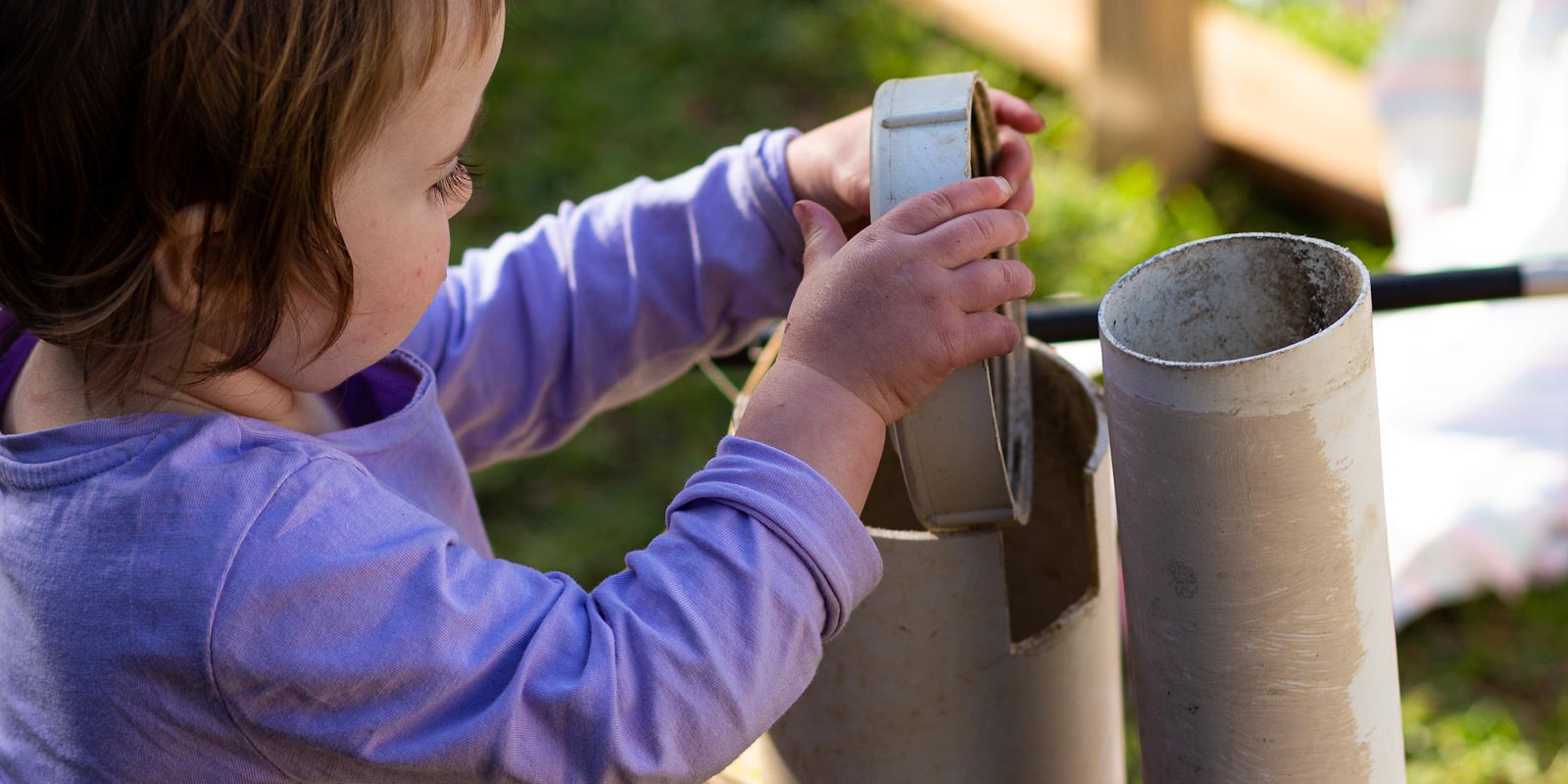
Loose parts are increasingly being used and appreciated in early childhood education, but where does the term come from?
In 1972, architect Simon Nicholson wrote about The Theory of Loose Parts. He claimed young children find the world restrictive when they cannot play with things that make them curious: building materials, fluids, fire, animals, plants and even people.
Nicholson wrote:
"In any environment, both the degree of inventiveness, creativity and the possibility of discovery, are directly proportional to the number and kind of variables in it."
Variables are loose parts. They are things that can be shifted around and have different colours, shapes, smells and sounds. Loose parts are processed materials and natural materials.
As an architect, Nicholson believed that all people (including children) should be allowed to influence and rearrange their public environments. Early childhood educators can embrace this theory by providing children with things that can be moved around and tinkered with. Children can have agency over their own learning and their own space.
NQS and EYLF learning outcomes
Loose parts comply with the National Quality Standard 3.2.2: "Resources, materials and equipment allow for multiple uses, are sufficient in number, and enable every child to engage in play-based learning."
Loose parts align with the Early Years Learning Framework (EYLF) learning outcomes, as they allow children to experiment (4.2) using natural materials and processed materials (4.4). Loose parts allow children to develop their emerging autonomy and sense of agency (2.2) by rearranging their own learning environments.
How to use loose parts
Imagine and express
- Arrange parts so they form a picture.
- Tell a story with them.
- Create a collage or sculpture.
- Dress up in them. Use them as role-play props.
- Draw or paint them.
- Pretend they are something else.
Play with STEM
- Build a structure or machine.
- Assemble and reassemble parts. Learn how they work.
- Create an obstacle course or maze.
- Sort, count, measure, classify and compare.
- Observe through a magnifying glass or microscope.
Use your senses
- Manipulate them with your hands.
- Smell and taste them.
- Listen to their sounds. Make music.
Get physical
- Push, pull and carry them around.
- Rearrange your environment.
- Throw them to a friend.
- Bang, crash and hit them. Break them into tiny pieces.
Games with loose parts
Children can use loose parts to play games that develop skills in memory and attention. Adjust the difficulty of these games by increasing or decreasing the number of loose parts.
At first, educators can play these games with children. As they become more confident, teach the children to play with each other.
What's on the tray?
- Place a few different loose parts on a tray and show them to a child.
- Cover the tray with a tea towel.
- Ask the child to name some of the objects they saw.
What's missing?
- Place a few different loose parts on a tray and show them to a child.
- Cover the tray with a tea towel while removing one of the objects.
- Ask the child to identify the missing object.
Loose part puzzles
- Place a few loose parts on a piece of paper.
- Trace around the objects with a pen.
- Remove the objects.
- Ask a child to match the objects correctly with their outlines, like a jigsaw puzzle.
Correct order
- Place a few loose parts in a line.
- Provide a child with exactly the same loose parts.
- Ask the child to place their objects in the same order as yours.
- Increase the difficulty of this game by hiding your objects after the child has seen them.
Treasure hunt
This game is similar to an Easter egg hunt, except it uses loose parts instead of chocolate. One group of children hides "treasure" in various locations in the classroom, and another group of children goes on a treasure hunt to find all the pieces.
The treasure can be any collection of small, identical loose parts (e.g. bottle caps, gems, shells).
